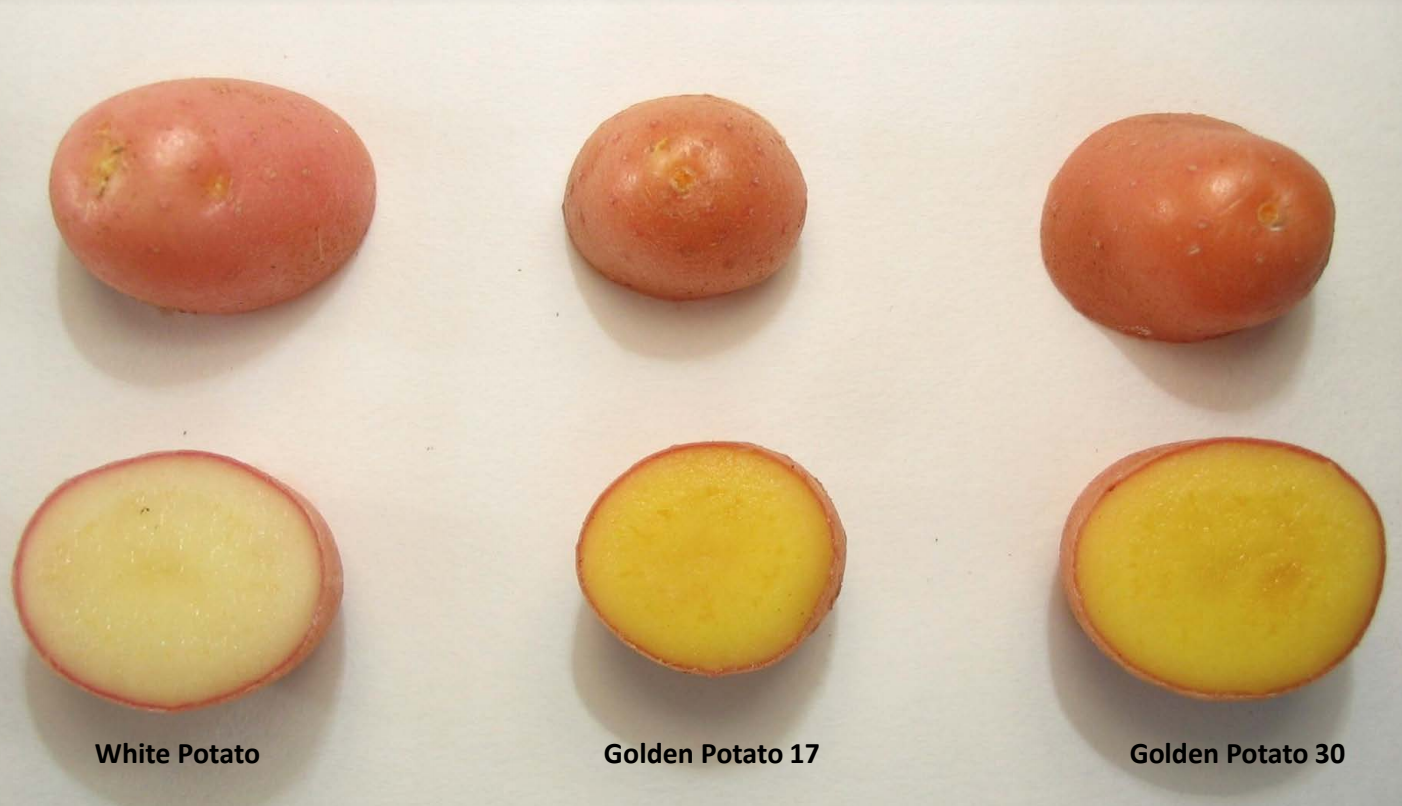
Diagram comparing typical white potato to the golden potatoes studied at Ohio State. Credit: Courtesy of Mark Failla
Beating Michigan and getting a pair of gold pants is not the only way Ohio State is golden.
Researchers proved that golden potatoes could help prevent death and disease in developing countries where potatoes are a staple food.
Designed at the Italian National Agency for New Technologies, Energy and Sustainable Development at the Casaccia Research Center in Rome, the newly developed potato has 42 percent of a child’s recommended daily need of vitamin A and 34 percent of a child’s recommended need of vitamin E.
“If you look at the economically poor in the world — about 2 billion people — then they don’t have the variety of food that those of us in the West have,” said Mark Failla, a professor emeritus of human nutrition at Ohio State who co-authored the potato study. “They have these staple foods that they eat.”
Potatoes are the fourth-most widely consumed plant food by humans, according to the U.S. Department of Agriculture. It is a prominent food in some Asian, African and South American countries where there is a high occurrence of vitamin A and vitamin E deficiencies.
“I became interested in what is going on in the developing countries because that is where there are still major nutritional problems,” Failla said. “A lot of it is what is called micronutrient deficiencies or ‘hidden hunger,’ which are deficiencies in vitamin A, zinc, iron and many cases, protein.”
Vitamin A is necessary for improved vision, fighting off sickness, growth, organ development and reproductive health. Vitamin A deficiencies are the leading cause of blindness in children.
Vitamin E protects against oxidative stress — a process that “rusts” our cells in the same way an apple turns brown when left out to the air — and swelling, conditions associated with damage to nerves, muscles, vision and the immune system. Vitamin E helps protect against cancer, Parkinson’s disease, Alzheimer’s and many other ailments.
One large problem is getting people to try newly developed potatoes, Failla said. There is a large social and cultural aspect to overcome with this, and a great example is the sweet potato, which is higher in these vitamins.
“In sub-Saharan Africa, culturally they have always eaten white potato, so if you put sweet potato in the market, is the mother of the house going to buy it when she has always grown up eating white potato?” Failla said. “You need an education program, it won’t just happen automatically.”
In the lab, researchers created a simulated digestive system, including a mouth, stomach and small intestine to determine how much vitamin A and vitamin E could potentially be absorbed by someone who eats a golden potato.
Provitamin A carotenoids are turned into vitamin A that the body can use. Carotenoids are pigments that give some fruits and vegetables their yellow, red and orange colors. These vitamins are stored in body fat and are essential for animals and humans.
Many of the lab tests were done by Chureeporn Chitchumroonchokchoi, a senior research associate at Ohio State.
“It is very exciting to find that a biofortified staple food such as ‘golden potato’ has the potential to provide considerable amounts of vitamins A and E for the hundreds of millions of individuals in developing countries,” Chitchumroonchokchoi said.
There is a lot of hope that golden potatoes will become accepted in countries where potatoes are staple food, she said. The potato will help prevent vitamin A and E deficiencies.
Chitchumroonchokchoi has a larger vision into where this research can go.
“We hope that nonprofit funding agencies will support further research with golden potato,” she said. “[This will] encourage their eventual consumption in regions where deficiencies of vitamins A and E remain a public health problem.
The study appears in the journal PLOS ONE.


